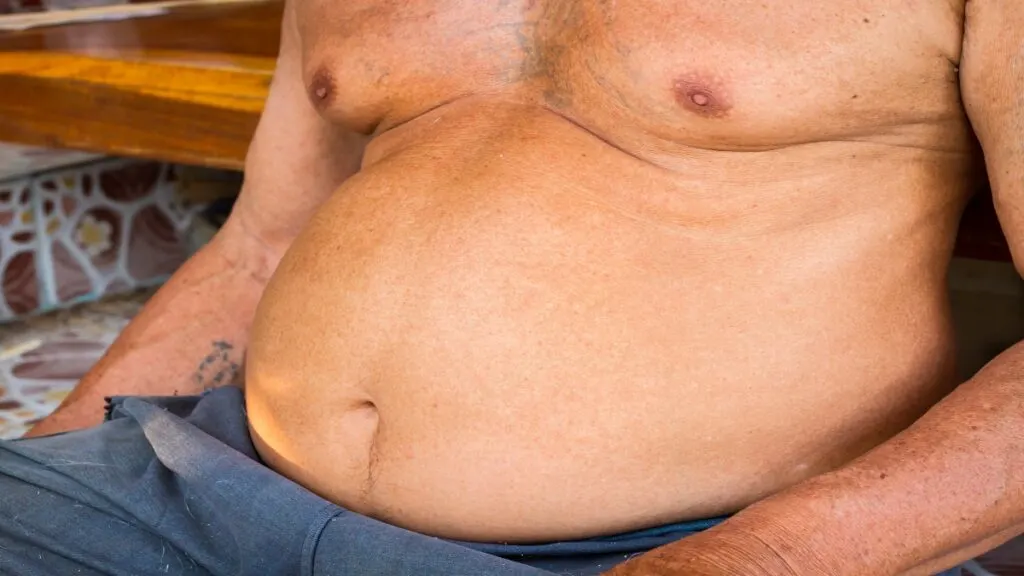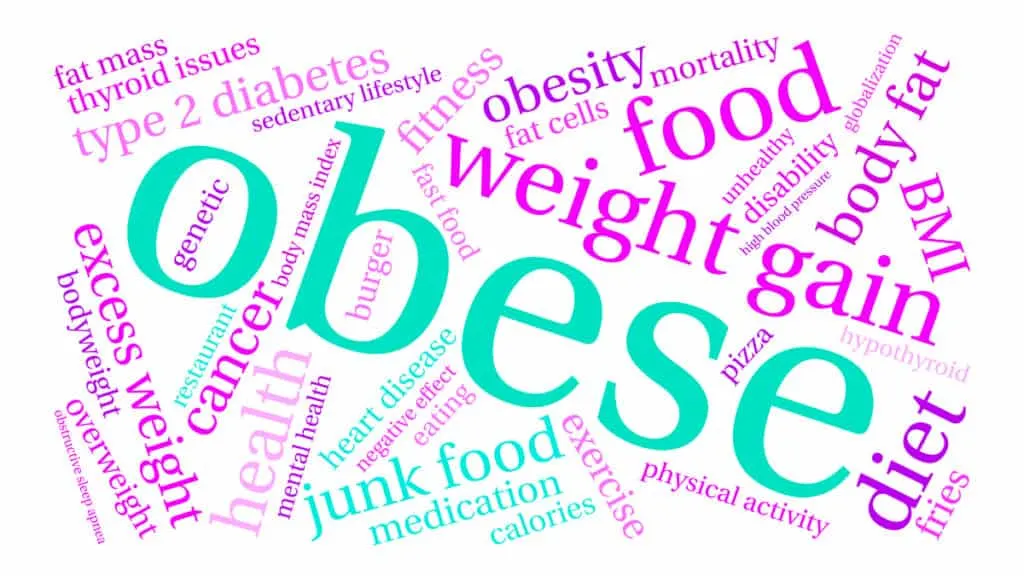If you have a BMI of 33, then your body mass index is considered obese in terms of the BMI categories. So what should you do?
Weight loss is obviously the way to go. And, in a way, a 33 BMI score isn’t that bad because it’s only classed as low-risk (or class 1) obesity.
As such, providing that you don’t let your weight get any heavier, you should be able to drop fat fairly quickly and see a significant reduction in BMI.
See More BMIs:
Is a 33 BMI bad for a woman?

A BMI of 33 is bad for a woman because a female who has a 33 BMI is considered obese, and we certainly know that obesity, left untreated, comes with many serious health consequences. [1]
Of course, many women these days have a body mass index that greatly exceeds 33, which is obviously a major public health concern.
Still, a BMI of 33 is higher than average for American women by over three BMI points, meaning that weight loss is definitely the way to go for a female who has a 33 BMI.
Is a BMI of 33 obese for a man?

A BMI of 33 is considered obese for a man because a body mass index of 33 is well into the class one obesity range.
While many athletes have a high BMI due to their large frame and accompanying muscle mass, lean mass alone can’t explain a 33 BMI score.
Indeed, you’d need to have superphysiological levels of muscle mass to achieve a lean BMI of 33, which isn’t possible to do naturally.
Still, you can definitely have a sizable combination of muscle mass and fat tissue at a BMI of 33; it’s just that most of a BMI 33 man’s body size is likely to be fat as opposed to muscle.
What does a BMI of 33 look like?

Most of the time, a BMI of 33 looks obese unless the individual is very tall or has a lot of muscle mass. This is because things like height and build can greatly affect a person’s body shape.
Nonetheless, virtually everyone with a 33 BMI score is going to have excess body fat to some degree.
Men are more likely to pile that body fat on around their waistlines, whereas women typically store the bulk of their fat around their legs and hips.
A central fat storage distribution is especially bad because it can cause visceral fat to accumulate around some of your organs (such as the liver and intestines).
This kind of fat can lead to chronic disease, which is why reducing a body mass index of 33 is so important.
33.1 BMI
A 33.1 BMI is well into the class 1 obesity category. This means that for an obese person, a BMI 33 individual is considered to be at relatively a low risk.
Of course, this is just based purely on BMI. If you have a really thick waist, for example, then your disease risk will increase dramatically.
33.2 BMI
If you have a BMI of 33.2, then your weight is excessive for a person of your height. Therefore, lowering your body mass should improve your quality of life and physical health.
33.3 BMI
A 33.3 BMI is comfortably in the obese body mass index classification because it’s considerably higher than average for both women and men.
33.4 BMI
If you’ve got a BMI of 33.4, then you need to lose weight in order to improve your health. Moderate calorie restriction and regular exercise are the best ways to achieve a BMI reduction.
33.5 BMI
If you have a 33.5 BMI, then you could be putting your health at risk by carrying excess body fat. A person with a BMI of 33.5 should talk with their doctor so that they can formulate a safe and effective weight loss plan.
33.6 BMI
A BMI of 33.6 is around 3-4 BMI points higher than usual for a woman and a man (and the average is already too high).
33.7 BMI
A 33.7 BMI is excessive even if you have a good amount of muscle mass. A person simply cannot walk around with a BMI of 33.7 while being optimally healthy.
33.8 BMI
If you’ve got a 33.8 BMI, then you’ll need to lose weight if you want to be healthy. Many obese individuals keep on gaining weight, but with a 33.8 BMI, you likely still have good mobility and, therefore, a good chance of slimming down.
33.9 BMI
A BMI of 33.9 is well into the obese BMI category. Depending on how much fat you have, especially around your waist, a 33.9 BMI could be putting you at serious risk for chronic disease.
Who usually has a BMI of 33?
While some extremely muscular athletes might have a body mass index that’s close to 33, those most likely to have a BMI of 33 are obese, often sedentary individuals.
Because of BMI’s inability to distinguish between fat and muscle, we can’t say for certain what a BMI 33 person will look like.
That said, there’s one thing that we do know; when you eat a lot and don’t move your body, the weight can pile on really quickly. And it seems like the more fat you gain, the easier it is to gain even more weight!
The good news is that with a 33 BMI score, you’re probably not obese to the point where regular exercise becomes an impossibility. As such, there’s definitely hope of achieving a healthy body weight if you have a body mass index of 33.
References
- De Lorenzo, A., Gratteri, S., Gualtieri, P., Cammarano, A., Bertucci, P., & Di Renzo, L. (2019). Why primary obesity is a disease?. Journal of translational medicine, 17(1), 169. https://doi.org/10.1186/s12967-019-1919-y
- Romero-Corral, A., Somers, V. K., Sierra-Johnson, J., Thomas, R. J., Collazo-Clavell, M. L., Korinek, J., Allison, T. G., Batsis, J. A., Sert-Kuniyoshi, F. H., & Lopez-Jimenez, F. (2008). Accuracy of body mass index in diagnosing obesity in the adult general population. International journal of obesity (2005), 32(6), 959–966. https://doi.org/10.1038/ijo.2008.11

